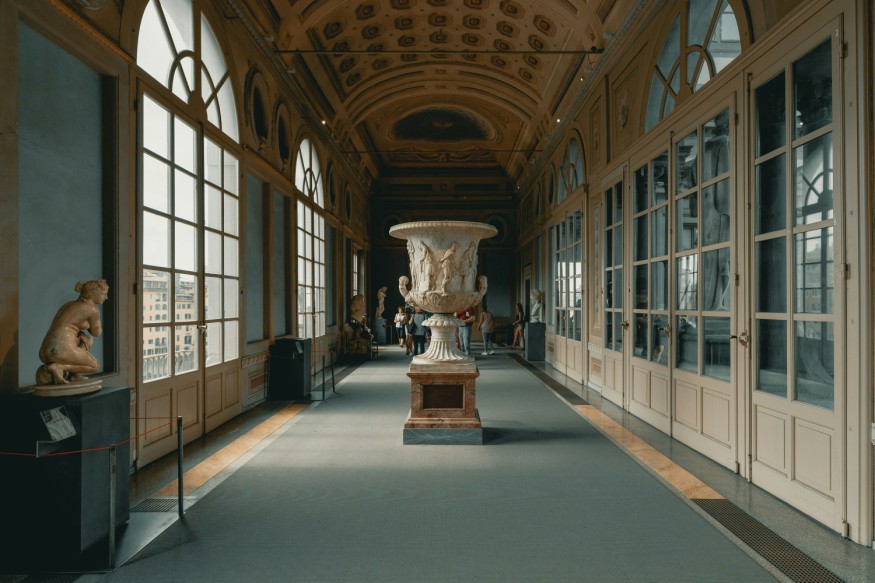US Returns 600 Looted Artifacts Worth $65 Million to Italy After Decades of Displacement

On Tuesday, Italy officially welcomed back 600 antiquities from the United States, collectively valued at $65 million. These artifacts, looted years ago and dispersed across museums, galleries, and private collections, include ancient gold coins, mosaics, manuscripts, and bronze statues. Their return follows an extensive criminal investigation spearheaded by US authorities.
Several US representatives, including Ambassador Jack Markell, Matthew Bogdanos, head of the antiquities trafficking unit of the New York District Attorney's Office, and members of the US Homeland Security investigations department, handed the items over to Italy's Carabinieri police force. This event underscores the US government's commitment to returning looted items to their countries of origin, demonstrating respect for Italy's cultural heritage.
A Mixed Victory
The Victorious Youth, a classical Greek bronze statue, was absent from the repatriated collection. This statue has been the subject of a protracted legal battle between Italy and the Getty Museum in California. Italy's top court, the Court of Cassation, ruled in 2018 that the statue must be returned to Italy. Despite this ruling, the Getty Museum has continued to assert its legal right to the statue, citing a previous court decision that found no evidence of Italian ownership. The statue remains part of an ongoing investigation.
Also Read : Yayoi Kusama's Unseen Masterpiece "Infinity" Expected To Fetch Over $5M at Bonhams Hong Kong Auction
The repatriation event included a diverse array of antiquities. Among the oldest returned artifacts were several Etruscan vases, a life-sized bronze figure, and bronze heads, all dating from the 9th century BCE to the second century. Other significant items included oil paintings from the 16th and 19th centuries, looted from Italian museums, religious institutions, and private residences.
Highlighting a Significant Piece
One of the most valuable pieces returned was a 4th-century Naxos silver coin featuring the Greek god of wine, Dionysius. This coin was taken from an illegal excavation site in Sicily around 2013 and trafficked into the United Kingdom. It was discovered as part of an investigation into a British coin dealer, who had offered it for sale for $500,000.
The success of these recoveries is largely attributed to local knowledge and vigilance. Locals are often aware of the security patterns at archaeological sites, including when security guards are present or absent and when authorized archaeological excavations occur. Unfortunately, this local insight can facilitate looting but also plays a crucial role in the recovery process when these items are trafficked.
Ongoing Efforts and Future Cooperation
The return of these artifacts affirms the need for continued work by various countries and international organizations to protect and return looted artifacts to their original locations. The two authorities represent a united stand on preventing the sale of stolen artifacts or any form of antiquities trafficking, with special emphasis on returning such artifacts to the rightful owner.
The return of these artifacts is an aspect of a global shift where countries demand the return of their ownership of cultural properties. More and more countries today demand the repatriation of artifacts brought into foreign territories either in the colonial period or by force or compradors. This trend has re-emerged in the last few years, with many scandals receiving attention from the media.
The recovery of these 600 antiquities to Italy is a huge improvement regarding fighting and preventing the sale and exportation of stolen cultural artifacts. Looking at the case of the Victorious Youth, though there is no successful conclusion to the story, these cases have shown that governments and art institutions from different parts of the world must continue strengthening their cooperation and vigilance. Recalling the significance of respecting and maintaining the relevant history with cultural items and the constant attempts to retrieve the stolen goods is helpful. Such an influx of global awareness and collaboration offers hope that more of the stolen artifacts will eventually return home to thoroughly serve humanity's historical generations.
From Digital Models to 3D-Printed Homes: Jaspreet Kaur Lall Explains How the Innovation Changes the Construction Industry

Future Belongs to Green Construction: Sampath Kumar Paspunoori Explains One of the Key Trends in the Construction Industry

Kamala Harris' Campaign Ad Uses Iconic Visuals from Carrie Mae Weems to Connect with Voters

Historic Ancient Roman Ruins in Baalbek Remain Strong After Israeli Air Strikes; Locals Seek Cultural Protection

4 Ways to Honor Departed Loved Ones in Your Home Design













